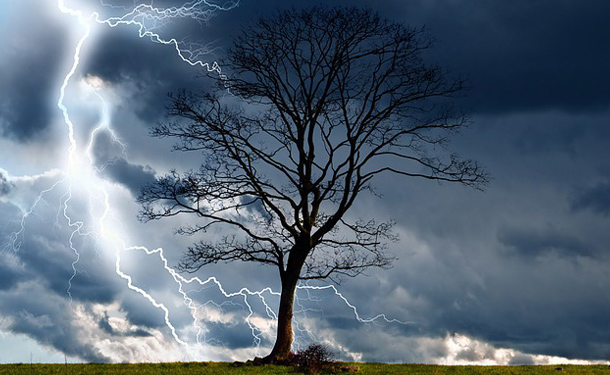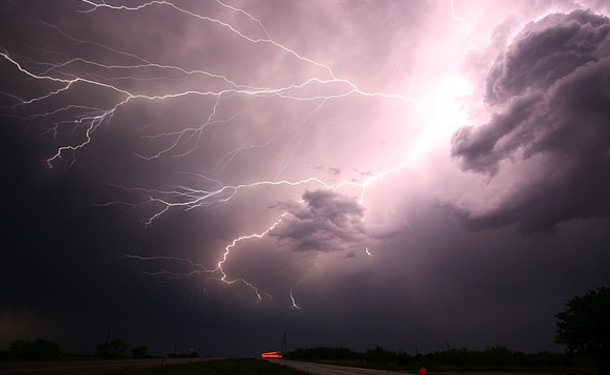For some of you, the title of this article may seem far-fetched, but there are cases when a tree can remain and heal after lightning hits it. Rain and lightning storms occur frequently, and often trees are struck. Outlined below, we are going to detail what happens to the tree and the methods to sustain it following a lightning strike.

What Happens When Lightning Strikes a Tree
The exact consequences on a tree after lightning strikes hinge on various things; for example, the tree’s species, the level of moisture within it, and the general health state of the tree the moment lightning strikes it.
Damage from lightning strikes is rapid. As soon as it happens, the tree’s internal liquids begin to evaporate and the bark of the tree gets shattered. Around 50% of the trees struck by a bolt of lighting die rapidly. The rest lose their integrity and become prone to health issues.
If the external wall of the bark is saturated from a high level of rainfall, the lightning will go around the tree and then to the soil with little injury as a result. In other cases, however, strong lightning strikes may tear the tree apart and set them on fire from its inside.
Recognizing Signs of a Lightning Struck Tree
The most prominent sign of lightning hit is the tearing apart of a bark and the surface peripheral split of the wood just below the lightning line. The lightning shock can make the tree bend and the wood loosen up or crack.
The most evident sign of lightning hit on a tree, apart from bark injury, are wilted leaves from damaged water pathways inside the roots or the stem. Irrevocably wilted leaves in a main tree branch or section are typically the first evident sign of lightning, in the case where the tree did not split or exploded.
In cases where the damage isn’t obvious, there are long-term symptoms that appear down the road. One of which is “recoverable foliage wilting”, which goes on/off for many months. In some cases its effects progressively worsen and can lead to twig death. The least evident sign is a slow-paced deterioration of a tree or its branch/es within 3 years, and pest infestations that block the tree’s new growth cycle.
Visit thetreecareguide.com/signs-that-you-need-to-remove-your-dying-damaged-tree/ for more signs to help in your decision as to whether you need to remove a tree.
Treating a Tree After a Lightning Strike
There are many incidents where the tree can make it through the strike, but it may suffer from disease and insect infestations later as the result of its shock. For more on treating insect related issues, see thetreecareguide.com/pest-prevention-treatment-tips/.
The right treatment can recover the tree provided the strike isn’t overly strong. Following the impact you must trim and remove any injured or cracked branches. Shaping and eliminating splintered wood promotes healing and allows the tree to compartmentalize its wound.
Likewise, fertilizer that has quick-release properties can be used to encourage new growth. A thorough inspection of oaks and hardwoods should be performed in anticipation of woodborers. Pines should also be checked for wood boring insects and beetles–if these show up, it’s best to spray the tree trunk with lindane (pesticide). Make sure you aim high when spraying (as high as possible) and then spray towards the trunk and the soil.
Fast Action Saves Trees After Lightning Strikes
Once lightning damage occurs, response time and immediate treatment is vital. The quicker you take action, the better chances the tree can heal and resolve the issue itself.

If the damage is mild and you begin treatment in less than 24 hours, you may avail treatment options like minimizing water loss, or specialized pressure techniques to reconnect the tissues. Speed is critical and increases options in your attempt to preserve a lightning struck tree.
If you still have concerns about what to do resolve to resolve any issue, it’s best to reach a tree expert to help you assess the damage or in worse cases remove the irreparable tree.
For more information on lightning struck trees visit http://www.gfc.state.ga.us/community-forests/ask-the-arborist/LightningStruckTrees.pdf